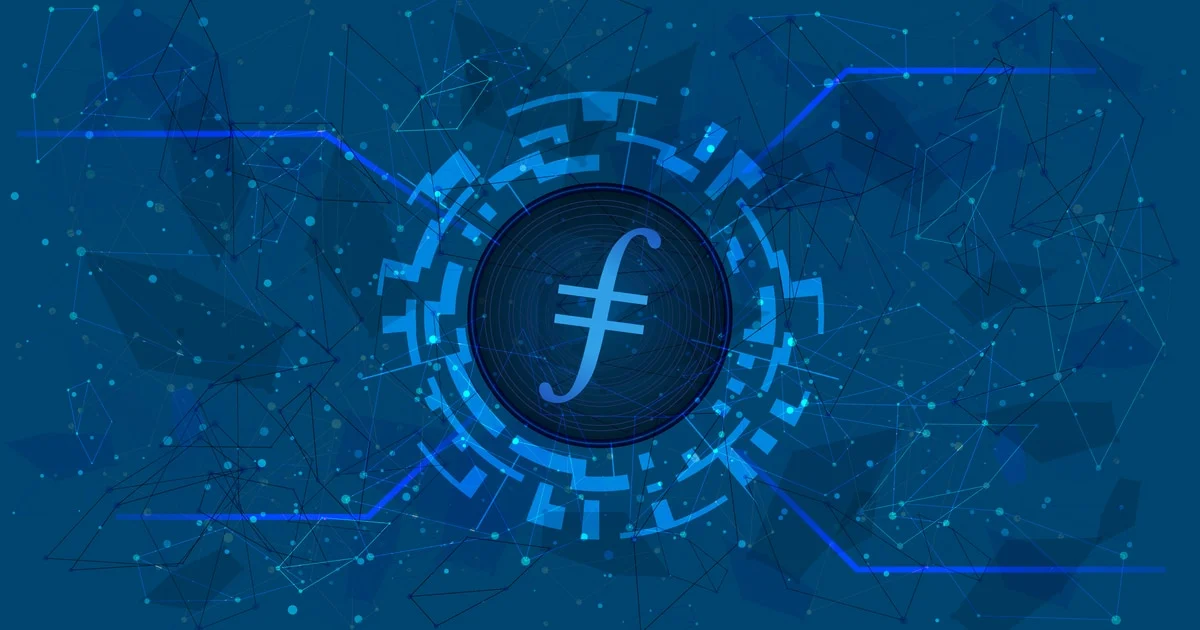-
 Bitcoin
Bitcoin $99,778.9891
2.93% -
 Ethereum
Ethereum $1,945.6065
5.88% -
 Tether USDt
Tether USDt $1.0002
0.02% -
 XRP
XRP $2.2112
3.38% -
 BNB
BNB $615.4038
1.85% -
 Solana
Solana $154.7186
4.77% -
 USDC
USDC $1.0003
0.02% -
 Dogecoin
Dogecoin $0.1839
6.08% -
 Cardano
Cardano $0.7216
5.60% -
 TRON
TRON $0.2512
1.77% -
 Sui
Sui $3.7210
9.94% -
 Chainlink
Chainlink $14.8907
7.41% -
 Avalanche
Avalanche $21.1141
6.45% -
 Stellar
Stellar $0.2756
5.27% -
 Bitcoin Cash
Bitcoin Cash $415.7614
10.87% -
 UNUS SED LEO
UNUS SED LEO $8.8011
1.34% -
 Shiba Inu
Shiba Inu $0.0...01348
4.97% -
 Hedera
Hedera $0.1874
5.71% -
 Toncoin
Toncoin $3.1238
3.39% -
 Hyperliquid
Hyperliquid $21.8730
3.07% -
 Litecoin
Litecoin $92.6356
0.99% -
 Polkadot
Polkadot $4.2850
7.59% -
 Monero
Monero $296.1310
2.97% -
 Dai
Dai $1.0002
0.00% -
 Bitget Token
Bitget Token $4.3467
0.65% -
 Ethena USDe
Ethena USDe $1.0004
0.00% -
 Pi
Pi $0.6228
7.50% -
 Pepe
Pepe $0.0...09225
12.88% -
 Bittensor
Bittensor $403.8089
10.84% -
 Uniswap
Uniswap $5.2080
6.25%
filecoin tutorial
Decentralized file storage network Filecoin leverages the power of blockchain and peer-to-peer connections to provide secure and efficient data storage in a distributed manner, removing the reliance on centralized servers.
Nov 06, 2024 at 02:00 pm

Filecoin Tutorial: A Comprehensive Guide to File Storage on the Blockchain
Introduction
Filecoin is a decentralized file storage network that allows users to store and retrieve files in a secure and efficient manner. Unlike traditional cloud storage providers, Filecoin does not rely on centralized servers, but instead distributes data across a network of computers, making it highly resistant to censorship and data loss.
1. Understanding the Basics of Filecoin
- Network Architecture:
Filecoin operates on a peer-to-peer network, where users act as both clients and storage providers. Users can store their files on the network by paying storage providers with FIL, the native token of Filecoin.
- Filecoin and IPFS:
Filecoin is tightly integrated with the InterPlanetary File System (IPFS), a protocol for storing and sharing data in a distributed manner. Filecoin provides a permanent and reliable storage layer for IPFS, ensuring that files remain accessible even if some of the network participants go offline.
2. Storing Files on Filecoin
- Creating a Filecoin Wallet:
To interact with the Filecoin network, you need to create a Filecoin wallet. This wallet will store your FIL tokens and allow you to manage your files on the network.
- Obtaining FIL Tokens:
FIL tokens can be purchased on cryptocurrency exchanges. Once you have tokens, they can be transferred to your Filecoin wallet for storage and transaction purposes.
- Choosing a Storage Provider:
Filecoin allows you to choose from a variety of storage providers based on their price, reliability, and other criteria. You can explore the list of providers and compare their offerings on the Filecoin Storage Providers website.
- Initiating a Storage Deal:
Once you have selected a storage provider, you can initiate a storage deal with them. A storage deal specifies the terms of the agreement, including the amount of storage space required, the duration of storage, and the price per gigabyte.
3. Retrieving Files from Filecoin
- Finding the File's CID:
When you store a file on Filecoin, it is assigned a unique Content Identifier (CID). The CID is similar to a URL and can be used to retrieve the file from the network.
- Accessing the File:
To access the file, you can use a Filecoin client or an IPFS gateway. Input the file's CID into the client or gateway, and it will fetch the file from the network.
4. Managing Files and Storage Deals
- Filecoin Explorer:
The Filecoin Explorer is a tool that allows you to view and manage your files and storage deals on the Filecoin network. It provides detailed information about file sizes, storage providers, and deal status.
- IPFS Pinning Tools:
IPFS pinning tools such as Pinata and Filebase allow you to ensure that your files remain accessible on the IPFS network even if they are not being actively stored by a Filecoin storage provider.
5. Additional Considerations
- Storage Costs:
Storage costs on Filecoin are determined by the storage provider and can vary depending on the market demand and the size and duration of the storage deal.
- Reliability and Security:
Filecoin uses advanced cryptographic techniques and redundancy mechanisms to secure files and ensure their integrity. The distributed nature of the network makes it resilient to data loss and censorship.
- Potential Applications:
Filecoin has a wide range of potential applications, including secure file storage and backup, decentralized content distribution, and data preservation for cultural heritage and scientific research.
Disclaimer:info@kdj.com
The information provided is not trading advice. kdj.com does not assume any responsibility for any investments made based on the information provided in this article. Cryptocurrencies are highly volatile and it is highly recommended that you invest with caution after thorough research!
If you believe that the content used on this website infringes your copyright, please contact us immediately (info@kdj.com) and we will delete it promptly.
- Dogecoin (DOGE) Price Has the Potential to Experience a Large Increase After Forming a Rare Pattern
- 2025-05-08 18:15:13
- Flare Network's total value locked has spiked by more than 160% over the past two weeks
- 2025-05-08 18:15:13
- EOS Price Surges 20% as the Coin Swaps to Vaulta
- 2025-05-08 18:10:12
- Streamlining Sei's Architecture to Focus Solely on EVM
- 2025-05-08 18:10:12
- Meme Coin Marvel Shiba Inu (SHIB) Could Be Challenged by Fast-Rising DeFi Coin, Mutuum Finance (MUTM)
- 2025-05-08 18:05:12
- Arizona Governor Katie Hobbs signs House Bill 2749 into law, allowing the establishment of a Bitcoin and Digital Assets Reserve Fund
- 2025-05-08 18:05:12
Related knowledge

What is Ethereum’s Slashing mechanism and how to punish malicious behavior?
Feb 20,2025 at 03:08am
Key PointsOverview of slashingDifferent types of slashing in EthereumIncentives and consequences of slashingIdentifying and reporting slashed validatorsOngoing discussions and potential improvementsEthereum's Slashing Mechanism: Punishing Malicious BehaviorEthereum's slashing mechanism is an essential tool for ensuring network security and punishing mal...

What is the verifier node of Ethereum and how to become a verifier?
Feb 19,2025 at 06:00pm
The Verifier Node of Ethereum: A Comprehensive GuideKey Points:What is a Verifier Node?How to Become a Verifier NodeResponsibilities and Rewards of a Verifier NodeMinimum Requirements for Becoming a Verifier NodePotential Difficulties in Running a Verifier Node1. What is a Verifier Node?A Verifier Node is an independent entity on the Ethereum network th...

What is Ethereum’s staking, and how to participate and earn money?
Feb 19,2025 at 04:37pm
Key Points:Understanding Ethereum's Staking MechanismSteps to Participate in StakingBenefits and Rewards of StakingSecurity and Risk ConsiderationsTechnical Requirements and Hardware OptionsPotential Challenges and Troubleshooting TipsFAQs on Ethereum StakingWhat is Ethereum's Staking?Proof-of-Stake (PoS) is a consensus mechanism used in blockchain netw...

What is Ethereum’s DAO (Decentralized Autonomous Organization) and how does it work?
Feb 20,2025 at 03:12am
Key PointsDefinition and Structure of a DAOGovernance and Decision-Making in DAOsBenefits and Use Cases of DAOsChallenges and Limitations of DAOsWhat is Ethereum's DAO (Decentralized Autonomous Organization) and How Does It Work?Definition and Structure of a DAOA Decentralized Autonomous Organization (DAO) is an innovative governance and management fram...

What is Ethereum's multi-signature wallet and how to improve security?
Feb 20,2025 at 02:18pm
Key Points:Understanding the Concept of a Multi-Signature WalletBenefits and Drawbacks of Multisig WalletsRequirements for Setting Up a Multisig WalletStep-by-Step Guide to Generating a Multisig WalletImplementing Strategies for Enhanced Security1. Understanding the Concept of a Multi-Signature WalletA multi-signature (multisig) wallet in the Ethereum e...

What is Ethereum's oracle and how to provide data for smart contracts?
Feb 21,2025 at 01:30am
Key Points:Understanding the concept of oracles in EthereumExploring different types of oraclesDetailed guide on how to provide data for smart contractsAddressing potential challenges and considerationsWhat is Ethereum's Oracle?Oracles are crucial components in the Ethereum ecosystem, enabling smart contracts to access real-world data and off-chain even...

What is Ethereum’s Slashing mechanism and how to punish malicious behavior?
Feb 20,2025 at 03:08am
Key PointsOverview of slashingDifferent types of slashing in EthereumIncentives and consequences of slashingIdentifying and reporting slashed validatorsOngoing discussions and potential improvementsEthereum's Slashing Mechanism: Punishing Malicious BehaviorEthereum's slashing mechanism is an essential tool for ensuring network security and punishing mal...

What is the verifier node of Ethereum and how to become a verifier?
Feb 19,2025 at 06:00pm
The Verifier Node of Ethereum: A Comprehensive GuideKey Points:What is a Verifier Node?How to Become a Verifier NodeResponsibilities and Rewards of a Verifier NodeMinimum Requirements for Becoming a Verifier NodePotential Difficulties in Running a Verifier Node1. What is a Verifier Node?A Verifier Node is an independent entity on the Ethereum network th...

What is Ethereum’s staking, and how to participate and earn money?
Feb 19,2025 at 04:37pm
Key Points:Understanding Ethereum's Staking MechanismSteps to Participate in StakingBenefits and Rewards of StakingSecurity and Risk ConsiderationsTechnical Requirements and Hardware OptionsPotential Challenges and Troubleshooting TipsFAQs on Ethereum StakingWhat is Ethereum's Staking?Proof-of-Stake (PoS) is a consensus mechanism used in blockchain netw...

What is Ethereum’s DAO (Decentralized Autonomous Organization) and how does it work?
Feb 20,2025 at 03:12am
Key PointsDefinition and Structure of a DAOGovernance and Decision-Making in DAOsBenefits and Use Cases of DAOsChallenges and Limitations of DAOsWhat is Ethereum's DAO (Decentralized Autonomous Organization) and How Does It Work?Definition and Structure of a DAOA Decentralized Autonomous Organization (DAO) is an innovative governance and management fram...

What is Ethereum's multi-signature wallet and how to improve security?
Feb 20,2025 at 02:18pm
Key Points:Understanding the Concept of a Multi-Signature WalletBenefits and Drawbacks of Multisig WalletsRequirements for Setting Up a Multisig WalletStep-by-Step Guide to Generating a Multisig WalletImplementing Strategies for Enhanced Security1. Understanding the Concept of a Multi-Signature WalletA multi-signature (multisig) wallet in the Ethereum e...

What is Ethereum's oracle and how to provide data for smart contracts?
Feb 21,2025 at 01:30am
Key Points:Understanding the concept of oracles in EthereumExploring different types of oraclesDetailed guide on how to provide data for smart contractsAddressing potential challenges and considerationsWhat is Ethereum's Oracle?Oracles are crucial components in the Ethereum ecosystem, enabling smart contracts to access real-world data and off-chain even...
See all articles
























![[2025.05.08] The two routes of Bitcoin continue to be observed, and gold is still bullish. [2025.05.08] The two routes of Bitcoin continue to be observed, and gold is still bullish.](/uploads/2025/05/08/cryptocurrencies-news/videos/routes-bitcoin-continue-observed-gold-bullish/image_500_375.webp)




























































